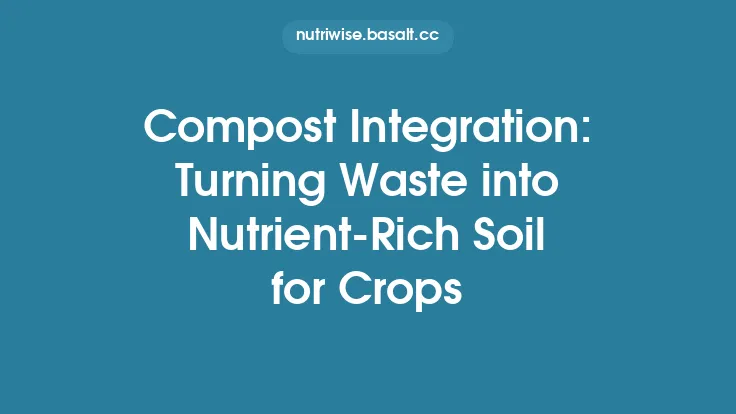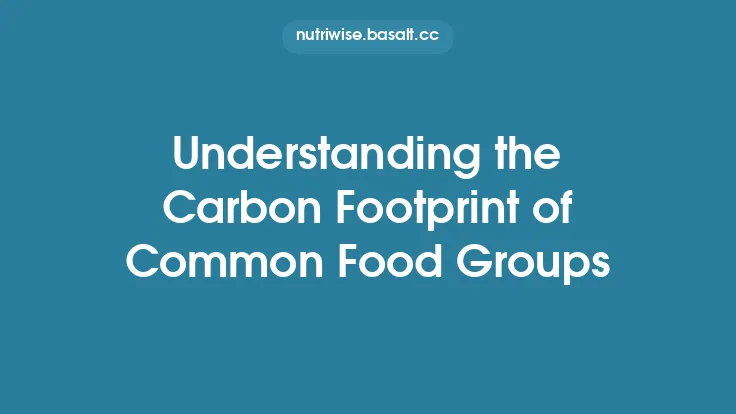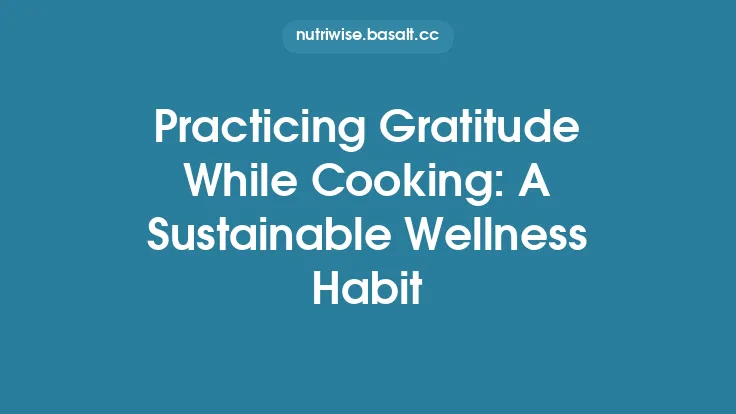Composting is one of the most effective ways to transform everyday kitchen waste into a valuable resource for your garden, balcony, or even community green space. By understanding the biological processes that break down organic matter, you can create a reliable system that consistently produces nutrient‑rich soil amendment while simultaneously reducing the volume of waste sent to landfills. This guide walks you through the science, the practical steps, and the advanced techniques that turn food scraps into a thriving, living soil component.
The Science Behind Composting: Microbes, Macro‑organisms, and the Decomposition Cycle
At its core, composting is a controlled biological oxidation process. A diverse community of microorganisms—bacteria, fungi, actinomycetes—and macro‑organisms such as earthworms, nematodes, and arthropods work together to break down complex organic compounds into simpler, stable forms of carbon and nutrients.
- Primary Decomposers (Bacteria & Fungi) – These microbes dominate the early stages, rapidly consuming soluble sugars, amino acids, and simple carbohydrates. Their metabolic activity generates heat, raising the pile temperature to 55–65 °C (131–149 °F), which accelerates breakdown and kills many weed seeds and pathogens.
- Secondary Decomposers (Actinomycetes & Fungi) – As the easily digestible material is exhausted, these organisms take over, degrading tougher compounds like cellulose, hemicellulose, and lignin. This phase is slower and often responsible for the characteristic earthy smell of mature compost.
- Macro‑organisms (Earthworms, Nematodes, Insects) – In the later stages, larger organisms ingest partially decomposed material, further grinding it and mixing it with their own casts, which are rich in plant‑available nutrients and beneficial microbes.
Understanding these roles helps you manage conditions—temperature, moisture, oxygen, and carbon‑to‑nitrogen (C:N) ratio—to keep the microbial community active and efficient.
Setting Up a Compost System: Choosing the Right Method for Your Space
There is no one‑size‑fits‑all solution; the optimal method depends on available space, time commitment, and local climate. Below are the most common systems, each with its own advantages and considerations.
1. Traditional Bin or Pile Composting
- Ideal for: Suburban yards with ample space.
- Materials: A sturdy bin (plastic, wood, or metal) or a simple heap on bare soil.
- Key Practices: Layer carbon‑rich “brown” materials (dry leaves, straw, shredded paper) with nitrogen‑rich “green” materials (fruit and vegetable scraps, coffee grounds). Aim for a C:N ratio of roughly 30:1.
- Maintenance: Turn the pile every 1–2 weeks to introduce oxygen and redistribute moisture.
2. Tumbler Composting
- Ideal for: Small yards or patios where turning by hand is cumbersome.
- Materials: A sealed, rotating drum that can be turned with a handle or crank.
- Key Practices: Load in balanced layers of browns and greens, keep the lid sealed to retain heat, and rotate every 3–5 days.
- Maintenance: Minimal; the tumbling action provides aeration and mixing automatically.
3. Vermicomposting (Worm Bins)
- Ideal for: Indoor or balcony use, especially in cooler climates where traditional composting may be slow.
- Materials: A shallow, opaque bin with bedding (coconut coir, shredded newspaper) and a population of red wigglers (*Eisenia fetida*).
- Key Practices: Feed with finely chopped food scraps, avoid citrus and oily foods, and keep the bedding moist but not soggy.
- Maintenance: Harvest worm castings every 2–3 months by moving the bin to one side and feeding only that side; the worms will migrate to the fresh food.
4. Bokashi Fermentation
- Ideal for: Rapid pre‑treatment of food waste, especially meat, dairy, and cooked foods that are problematic in aerobic compost.
- Materials: An airtight bucket, bokashi inoculant (effective microorganisms, EM), and a source of bran or sawdust.
- Key Practices: Layer waste with inoculated bran, compress tightly, and seal. After 2–4 weeks, the fermented material can be buried in a garden bed or added to a traditional compost pile for final decomposition.
- Maintenance: Minimal; the process is anaerobic, so no turning is required.
Balancing Carbon and Nitrogen: The C:N Ratio Explained
A well‑balanced C:N ratio is the cornerstone of efficient composting. Carbon provides energy for microbes, while nitrogen supplies the proteins needed for growth. An imbalance leads to either a slow, smelly pile (excess nitrogen) or a dry, inert heap (excess carbon).
| Material | Typical C:N Ratio |
|---|---|
| Dry leaves (shredded) | 60:1 – 80:1 |
| Straw | 80:1 – 120:1 |
| Sawdust (fine) | 200:1 – 500:1 |
| Newspaper (black & white) | 150:1 – 200:1 |
| Kitchen vegetable scraps | 15:1 – 20:1 |
| Coffee grounds | 20:1 – 25:1 |
| Eggshells (crushed) | 15:1 – 20:1 |
| Manure (herbivore) | 15:1 – 25:1 |
Practical tip: For a typical kitchen waste stream, aim for roughly three parts brown material to one part green material by volume. If the pile feels too wet or smells of ammonia, add more dry browns; if it’s dry and crumbly, add a splash of water and a handful of greens.
Managing Moisture and Aeration: The “Goldilocks” Conditions
- Moisture: The ideal moisture content is comparable to a wrung‑out sponge—damp but not dripping. Too much water creates anaerobic zones, leading to foul odors and slower decomposition. Too little stalls microbial activity.
- Aeration: Oxygen is essential for aerobic microbes that generate heat. Turning the pile, using a tumbler, or incorporating porous materials (e.g., small branches) improves airflow. In vermicomposting, the shallow depth and porous bedding naturally maintain oxygen levels.
Testing moisture: Grab a handful of compost and squeeze. If a few drops of water escape, it’s too wet; if it crumbles without any moisture, add water gradually while mixing.
Temperature Monitoring: Why Heat Matters and How to Control It
During the thermophilic phase (55–65 °C), pathogens, weed seeds, and most plant diseases are destroyed. This high‑temperature window also speeds up the breakdown of complex organic compounds.
- How to monitor: Use a compost thermometer inserted into the center of the pile. Record temperatures daily for the first two weeks.
- What to do if temperatures stay low (<45 °C):
- Increase the pile size (minimum 1 m³ for effective heat generation).
- Add more nitrogen‑rich greens.
- Turn the pile to introduce fresh oxygen.
- What to do if temperatures exceed 70 °C:
- Turn the pile to cool it down.
- Add more carbon‑rich browns to absorb excess heat.
Troubleshooting Common Compost Problems
| Problem | Symptoms | Solution |
|---|---|---|
| Foul odor (rotten egg) | Strong ammonia or sour smell | Add more carbon material, turn the pile, check moisture (may be too wet). |
| Pile not heating up | Temperatures stay below 45 °C | Increase nitrogen input, ensure adequate pile size, turn for aeration. |
| Pile stays dry | Crumbly, dusty texture, no heat | Lightly spray water, cover with a tarp to retain moisture. |
| Invasive pests (rats, flies) | Visible critters, egg shells missing | Bury food scraps under a layer of browns, use a secure bin with a lid. |
| Slow decomposition | Material still recognizable after months | Turn more frequently, add a compost starter (e.g., garden soil or manure). |
| Excessive weed seeds in compost | Weeds sprouting when spread | Ensure thermophilic phase reaches >55 °C, or pre‑treat with bokashi. |
Harvesting and Using Finished Compost
Mature compost is dark, crumbly, and has an earthy smell. It should be free of recognizable food particles and have a pH close to neutral (6.5–7.5). Harvesting methods differ by system:
- Bin/Pile: Sift through a screen (½‑inch mesh) to separate fine compost from larger, unfinished material. Return the larger pieces to the pile for further decomposition.
- Tumbler: Open the drum after the final turn; the compost will be ready to pour out.
- Vermicompost: Move the bin to one side, feed only that side, and collect the castings that accumulate in the opposite side.
- Bokashi: Bury the fermented material in a garden bed; after a few weeks it will integrate into the soil.
Application tips:
- Soil amendment: Mix 1‑2 inches of compost into garden beds before planting.
- Mulch: Spread a thin layer (½‑1 inch) over existing plant beds to retain moisture and suppress weeds.
- Potting mix: Combine equal parts compost, peat or coco coir, and perlite for a balanced container medium.
- Compost tea: Steep mature compost in water (1 cup per gallon) for 24–48 hours, then strain and use as a foliar spray or soil drench for a quick nutrient boost.
Scaling Up: Community and Urban Compost Initiatives
For those looking beyond the household, composting can be expanded to neighborhoods, schools, or municipal programs.
- Community Compost Hubs: Centralized bins placed in accessible locations allow multiple households to contribute. Managed by volunteers, these hubs often partner with local farms or community gardens that use the finished product.
- Backyard Wormeries: Schools can set up vermicomposting stations as educational tools, teaching students about soil biology and waste reduction.
- Municipal Drop‑off Sites: Many cities provide designated compost collection points for food service waste, which is then processed at large‑scale facilities using in‑vessel composting technology.
- Urban Rooftop Composting: Compact, insulated bins can be placed on rooftops, taking advantage of solar heat to maintain thermophilic temperatures even in cooler climates.
When organizing larger projects, consider regulations regarding odor control, pest management, and the handling of animal by‑products. Engaging local authorities early can smooth the permitting process.
Environmental and Economic Benefits of Composting
- Greenhouse Gas Reduction: Diverting organic waste from landfills prevents methane—a gas 28‑times more potent than CO₂ over a 100‑year horizon—from forming.
- Soil Health Improvement: Compost adds organic matter, improves water retention, and enhances microbial diversity, leading to healthier plant growth and reduced need for synthetic fertilizers.
- Cost Savings: Home gardeners can cut fertilizer expenses, while municipalities can lower waste disposal fees.
- Resource Recovery: Composting turns a liability (food waste) into a valuable asset (soil amendment), embodying the principles of a circular economy.
Advanced Techniques: Compost Tea, Biochar Integration, and In‑Vessel Systems
Compost Tea
A liquid extract of compost that captures soluble nutrients and beneficial microbes. To brew:
- Fill a 5‑gallon bucket with non‑chlorinated water.
- Add 1 cup of mature compost.
- Aerate with an aquarium pump for 24–48 hours.
- Strain and apply within 12 hours for maximum microbial viability.
Biochar Integration
Mixing biochar (charcoal produced under low‑oxygen conditions) into compost can:
- Increase carbon stability, sequestering carbon for centuries.
- Provide a porous habitat for microbes.
- Improve nutrient retention, reducing leaching.
Add biochar at a rate of 5–10 % by volume to the compost mix.
In‑Vessel Composting
Commercial-scale, enclosed reactors control temperature, moisture, and aeration precisely. While beyond most home setups, small‑scale in‑vessel units (e.g., 55‑gallon drums with automated turning) are available for serious hobbyists seeking faster turnaround (as little as 2–4 weeks).
Getting Started: A 30‑Day Action Plan
| Day | Task |
|---|---|
| 1‑3 | Choose a compost method and locate the site. Gather bins, bedding, and a thermometer. |
| 4‑7 | Start the pile or bin with a 4‑inch layer of coarse browns (shredded leaves or straw). |
| 8‑14 | Add your first batch of kitchen greens, mixing thoroughly. Keep the pile moist. |
| 15‑21 | Turn the pile (or rotate the tumbler) and check temperature. Adjust C:N balance if needed. |
| 22‑28 | Introduce a secondary layer of browns, continue regular turning, and monitor moisture. |
| 29‑30 | Assess progress: if the pile is hot and crumbly, you’re on track. If not, add more nitrogen or water and turn again. |
By the end of the month, you should have a partially decomposed mass that will finish curing over the next few weeks, ready for harvest.
Final Thoughts
Composting is more than a waste‑management trick; it is a regenerative practice that reconnects us with the natural cycles of matter. By mastering the balance of carbon and nitrogen, maintaining optimal moisture and aeration, and selecting a system that fits your lifestyle, you can consistently produce a high‑quality, nutrient‑dense soil amendment. Whether you’re feeding a backyard garden, enriching a community plot, or simply reducing your household’s environmental footprint, turning food scraps into compost is a tangible, rewarding step toward sustainable and ethical eating.





